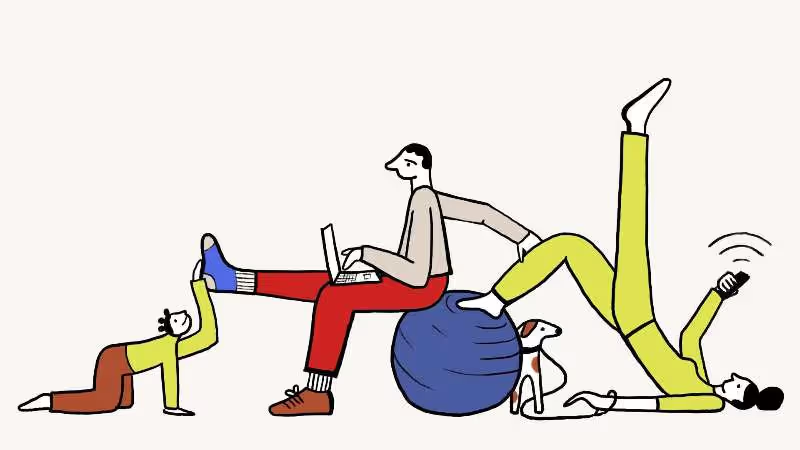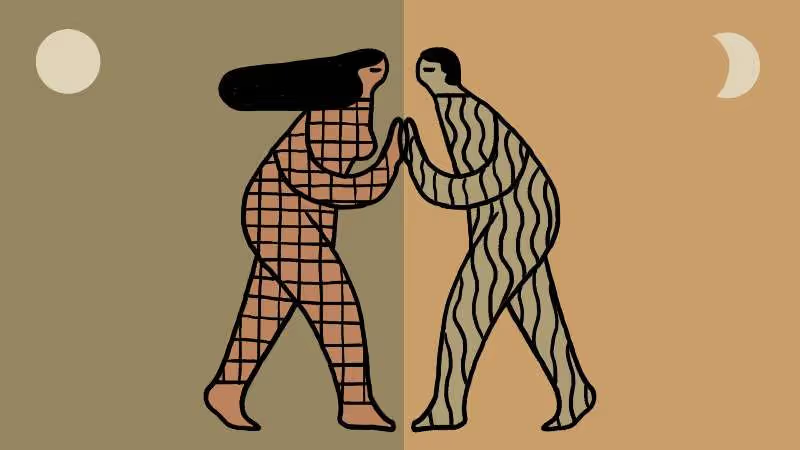How do our communities remain emotionally and socially connected when we must be physically apart?
It’s very hard to separate our bodies from our hearts. Last week, seven hundred people in New Rochelle—the quarantined epicenter of the Covid-19 outbreak in New York—held a town meeting online. While each of them were confined to their homes, alone or with family, the community was together in this virtual space. Decisions were made. Students with computers and iPads at home would be able to continue school classes via conference calls. They would need to source devices for children who did not have their own. A local caterer who had already prepared food for a Bar Mitzvah offered to divide the group meal into 152 boxes and deliver them to anyone in need. Parents wondered if they could touch their children. A husband and wife on the verge of separation would have to find a way to work from home together. “Even a big house becomes small when you're locked in it together,” the wife told me.
In the age of Covid-19, a new normal has arrived. As we isolate as individuals and families, we must activate the resilience of our communities virtually in order to gather information, plan interventions at schools and hospitals, and strategize about how to continue working, learning, socializing, loving, and desiring through screens. This is uncharted territory for many of us, and it’s the first time in our lifetimes that the mandate to do social distancing has been the norm at the global level.
China and Europe, as well as American cities such as Seattle and New Rochelle, embarked on this journey a few weeks before the rest of the world. As of this writing, it is estimated that the U.S., England, France, Spain and Germany are approximately 9-10 days behind Italy in the COVID-19 progression. Listen to what Italians wish they would have known ten days ago. Their advice follows guidelines from the World Health Organization, which emphasizes the need to socially distance as early as possible to slow the spread of the virus and flatten the curve. Even if an infected person has a mild case, they could have a significant impact if they accidentally infect someone else who is more vulnerable to this disease. So we must ask: when the most socially responsible thing we can do is avoid other people, how can we maintain social connection?
We Are All In This Together
We must acknowledge that we are entering a time of prolonged acute stress and uncertainty and that it is a shared reality—with our families, communities, colleagues, and all of humanity. We must be physically apart, but we are emotionally and psychologically in this together. Though the circumstances are different, this situation has induced a rapidly mounting psychological panic not dissimilar to what has historically occurred in response to terror attacks, natural disasters, and life in warzones, especially when there is a lack of resources, information is ambiguous, and instructions are unclear. It’s easy to feel helpless. Activating the collective healing capabilities of our communities—by sharing stories and accurate information, helping each other, and lifting one anothers’ spirits—is the most powerful antidote to fear, loneliness, and isolation.
In the eighties, I, along with my husband Jack Saul—a psychologist who specializes in large-scale psychosocial trauma and collective resilience—taught together at the Psychosocial Center for Refugees, in Oslo, about family life in war and exile. We shared how extreme conditions affect communication and closeness between couples, parents, children, and neighbors. I drew from my work with Jewish people who had been “hidden” during World War II and what I had learned about how their situations affected their emotional, sexual and intellectual intimacy. Jack, for his part, taught that these situations were not only the trauma of the individual, but of entire communities. Much of his work surrounds the reality that collective trauma necessitates collective healing, a process dependent on the activation of our communities, not just ourselves. It lifts everyone and takes certain pressures off our partners and families to do it all ourselves, a crushing and near-impossible feat.
After 9/11, Jack and I held workshops for residents, teachers, students, and parents in our downtown Manhattan community. Rather than screening individuals for PTSD, we recognized that collective trauma was setting in. He emphasized the need to mine the strengths and resources of the community to address our shared fears about breathing burnt plastic and to help the children feel safe(r). We were all addressing together how to live with the uncertainty of prolonged environmental stress, dislocation, and loss—of people, homes, schools, income, and innocence. It was a time of great uncertainty and unprecedented communal cohesion. Something similar is happening here and now. Many of the lessons we learned then are applicable, but there’s a twist: instead of needing to leave our homes, we must stay confined within them.
Social Connection in a Virtual World
To make social distancing bearable rather than a major source of strain, we must insist on maintaining our social and emotional support. Never has social media been more important for providing connection and context, as many of our communities go entirely online. On Friday night, I attended Shabbat services with 900 people on Facebook Live. We sang together and practiced the shared rituals our ancestors had also held onto in situations of crisis, injustice, poverty, and dread. We were drawn together by our Rabbi, Amichai Lau Lavie, who invited us with the message: “Know that we're all in this together, that we've got ways to communicate, and that our ancestors left us tales and tools to help us handle even these most dramatic realities.”
Every one of us, in every part of the world, carries these types of stories of vulnerability and triumph. The stories are our guidelines for how to adapt in the present. As Jack Saul wrote in his book “Collective Trauma, Collective Healing,” resilience is only as effective as it is diverse. It must draw from the perspective of all races, creeds, and classes, as well as multiple indigenous traditions, both secular and religious. The more stories we share, the better off we are.
Social Connection Without Breaking CDC guidance
- Start a group chat with your extended family for updates and encouragement. Discuss best practices for caring for elderly and very young family members. Share plans, but have phone calls, even conference calls, if you need to come up with a plan together.
- Jack Saul advises creating an ecomap of your resources. Who do you know? Where are they? Who can help you with what? And who can you help?
- Join your local community’s group on Facebook or NextDoor for insight about your surroundings and to engage in group conversations with neighbors. (In one Facebook group for Long Island mothers, a member advised the group that many local stores had run out of toilet paper and included a link to where more could be bought on Amazon.)
- Suggest a digital sunday supper with friends via conference video call. Start a book or film club. Share music. It’s important to continue to culturally connect in ways that aren’t defined by sharing updates about Coronavirus.
- Important event canceled? See if it can be held virtually via group chat or livestream, like this birthday party and these operas. (It’s more fun than it sounds.)
- If you have school-aged children, create structure and routine to help support their learning (examples here). Check in with other parents to troubleshoot challenges, share creative ideas, and commiserate. Don't be hard on yourself if you need to break the structures you’ve put in place; it’s a learning experience for all of us.
- If you are able, volunteer to help teachers, administrators, and students with the transition to virtual learning.
- If you are able to volunteer virtually to help your local senior centers, home care facilities, hospitals, and/or Urgent Care centers, call or email to find out how you can do so.
- Find virtual forums addressing similar situations, i.e. this Sub-Reddit for people under quarantine.
- Commune with nature.
- Check the facts to avoid spreading misinformation.
Economic stress and loneliness are two of the most important social determinants of health. If you are in a position to be able to financially contribute, consider donating to Safe Horizon, which provides resources for victims of crime including domestic and sexual violence, and/or CityMeals on Wheels, which provides meals to more than 18,000 homebound elderly New Yorkers.
If you are in a position to donate your energy and time, check in with elderly neighbors to see if you can drop supplies or food outside their door. Consider starting a virtual fundraiser among your friends and family to raise money for organizations like Feeding America. Stay up-to-date with social media accounts that will share ways to support those in difficult situations. @Serviceworkerscoalition has mobilized to assist those working in the service industry who have lost wages and hours due to the pandemic. @Nokidhungry is committed to helping ensure that school children from low-income families have access to meals while schools are closed.
In the western world, our tendency is to see resilience as a set of individualistic traits rather than the combined and diverse capacities and resources of a community. It’s time to change that. Despite the necessity of staying physically apart, we have an opportunity to activate the specific type of collective resilience that can emerge when faced with communal prolonged uncertainty and potential widespread trauma. A powerful antidote to loneliness and fear is purpose. Say it again, a mantra for these strange times: we are all in this together.







.svg)





